Eighth United States Army
| Eighth Army | |
|---|---|
 The Eighth Army's distinctive unit insignia | |
| Founded | 10 January 1944 |
| Country |
|
| Branch |
|
| Type | Field army |
| Role | Cadet services, unarmed & light infantry |
| Part of | Regular Army |
| Garrison/HQ |
United States Army Garrison-Humphreys Pyeongtaek, South Korea |
| Motto(s) | Pacific Victors |
| Engagements |
World War II Korean War |
| Commanders | |
| Current commander | LTG Michael A. Bills |
| Notable commanders |
Robert Eichelberger Walton H. Walker Matthew Ridgway James Van Fleet Maxwell D. Taylor |
| Insignia | |
| Combat service identification badge |
 |
| Flag |
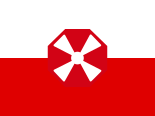 |
The Eighth United States Army (EUSA) is a U.S. field army[1] which is the commanding formation of all United States Army forces in South Korea. It commands U.S. and South Korean units[1] and is headquartered at the United States Army Garrison-Humphreys,[2] in the Anjeong-ri of Pyeongtaek, South Korea.
History
World War II
The unit first activated on 10 June 1944 in the United States, being commanded by Lieutenant General Robert Eichelberger. The Eighth Army took part in many of the amphibious landings in the Southwest Pacific Theater of World War II, eventually participating in no less than sixty of them. The first mission of the Eighth Army, in September 1944, was to take over from the U.S. Sixth Army in New Guinea, New Britain, the Admiralty Islands and on Morotai, in order to free up the Sixth Army to engage in the Philippines Campaign (1944–45).
The Eighth Army again followed in the wake of the Sixth Army in December 1944, when it took over control of operations on Leyte Island on 26 December. In January, the Eighth Army entered combat on Luzon, landing the XI Corps on 29 January near San Antonio and the 11th Airborne Division on the other side of Manila Bay two days later. Combining with I Corps and XIV Corps of Sixth Army, the forces of Eighth Army next enveloped Manila in a great double-pincer movement. Eighth Army's final operation of the Pacific War was that of clearing out the southern Philippines of the Japanese Army, including on the major island of Mindanao, an effort that occupied the soldiers of the Eighth Army for the rest of the war.
Occupation of Japan
Eighth Army was to have participated in Operation Downfall, the invasion of Japan. It would have taken part in Operation Coronet, the second phase of the invasion, which would have seen the invasion of the Kantō Plain on eastern Honshū. However, instead of invading Japan, Eighth Army found itself in charge of occupying it peacefully. Occupation forces landed on 30 August 1945, with its headquarters in Yokohama, then the HQ moved to the Dai-Ichi building in Tokyo. At the beginning of 1946, Eighth Army assumed responsibility for occupying all of Japan. Four quiet years then followed, during which the Eighth Army gradually deteriorated from a combat-ready fighting force into a somewhat soft, minimally-trained constabulary. Lieutenant General Walton H. Walker took command in September 1948, and he tried to re-invigorate the Army's training, but he was largely unsuccessful. This situation was to have serious consequences in South Korea.
Korean War
At the end of World War II in 1945, Korea was divided into North Korea and South Korea with North Korea (assisted by the Soviet Union),[3] becoming a communist government after 1946, known as the Democratic People's Republic, followed by South Korea becoming the Republic of Korea.[4] China became the communist People's Republic of China in 1949. In 1950, the Soviet Union backed North Korea while the United States backed South Korea, and China allied with the Soviet Union in what was to become the first military action of the Cold War.[5][6]
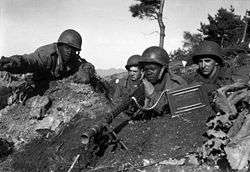
The peace of occupied Japan was shattered in June 1950 when 75,000 North Korean troops with Russian made tanks invaded South Korea, igniting the Korean War.[7][8] U.S. naval and air forces quickly became involved in combat operations, and it was soon clear that U.S. ground forces would have to be committed. To stem the North Korean advance, the occupation forces in Japan were thus shipped off to South Korea as quickly as possible, but their lack of training and equipment was telling, as some of the initial U.S. units were destroyed by the North Koreans. However, the stage was eventually reached as enough units of Eighth Army arrived in Korea to make a firm front. The North Koreans threw themselves against that front, the Pusan Perimeter, and failed to break it.
Eighth Army arrived in July 1950 and never left. —Lt. Gen. Thomas S. Vandal, CG, Eighth Army, 29 August 2017[9]
In the meantime, Eighth Army had reorganized, since it had too many divisions under its command for it to exercise effective control directly. The I Corps and the IX Corps were reactivated in the United States and then shipped to Korea to assume command of Eighth Army's subordinate divisions.
The stalemate was broken by the Inchon landings of the X Corps (tenth corps, consisting of soldiers and Marines). The North Korean forces, when confronted with this threat to their rear areas, combined with a breakout operation at Pusan, broke away and hastily retired north.
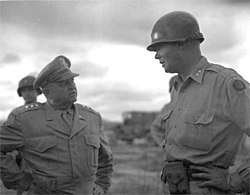
Both South and North Korea were almost entirely occupied by United Nations forces. However, once U.S. units neared the Yalu River and the frontier between North Korea and China, the Chinese intervened and drastically changed the character of the war. Eighth Army was decisively defeated at the Battle of the Chongchon River and forced to retreat all the way back to South Korea. U.S. historian Clay Blair noted that the Eighth Army was left completely unprotected on its right flank due to the Turkish Brigade's retreat despite myths that arose about the Turks killing 200 enemies by bayonet. The defeat of the U.S. Eighth Army resulted in the longest retreat of any U.S. military unit in history. General Walker was killed in a jeep accident on 23 December 1950, and replaced by Lieutenant General Matthew Ridgway. The overstretched Eighth Army suffered heavily with the Chinese offensive, who were able to benefit from shorter lines of communication and with rather casually deployed enemy forces. The Chinese broke through the U.S. defenses despite U.S. air supremacy and the Eighth Army and U.N. forces retreated hastily to avoid encirclement. The Chinese offensive continued pressing U.S. forces, which lost Seoul, the South Korean capital. Eighth Army's morale and esprit de corps hit rock bottom, to where it was widely regarded as a broken, defeated rabble.
General Ridgway forcefully restored Eighth Army to combat effectiveness over several months. Eighth Army slowed and finally halted the Chinese advance at the battles of Chipyong-ni and Wonju. It then counter-attacked the Chinese, re-took Seoul, and drove to the 38th parallel, where the front stabilized.
When General Ridgway replaced General of the Army Douglas MacArthur as the overall U.N. commander, Lieutenant General James Van Fleet assumed command of Eighth Army. After the war of movement during the first stages, the fighting in Korea settled down to a war of attrition. Ceasefire negotiations were begun at the village of Panmunjom in the summer of 1951, and they dragged on for two years. During the final combat operation of the war, Lieutenant General Maxwell D. Taylor (promoted to general 23 June 1953) commanded the Eighth Army. When the Military Demarcation Line was finally agreed to by the Korean Armistice Agreement, the Eighth Army had failed in its mission of capturing the Korean peninsula, but the realities of a limited war in a world of nuclear weapons had become obvious. South Korea and North Korea continued on as separate states.
Post Korean War
_001.jpg)
During the aftermath of the Korean War, the Eighth Army remained in South Korea. By the 1960s, I Corps, consisting of the 7th Infantry Division and the 2nd Infantry Division, remained as part of the Eighth Army. Then, in 1971, the 7th Infantry Division was withdrawn, along with the command units of I Corps, which were moved across the Pacific Ocean to Fort Lewis, Washington.[10] Later, in March 1977, a memo from President Jimmy Carter said "...American forces will be withdrawn. Air cover will be continued." Bureaucratic resistance from the Executive Branch, with support in Congress, eventually saw the proposal watered down. Eventually one combat battalion and about 2,600 non-combat troops were withdrawn.[11]
This left the 2nd Infantry Division at the Korean Demilitarized Zone to assist the South Korean Army. Besides forming a trip-wire against another North Korean invasion, the 2nd Infantry Division remained there as the only Army unit in South Korea armed with tactical nuclear weapons. (Otherwise, there is only the U.S. Air Force in South Korea and on Okinawa.) All nuclear weapons were taken from the Army to be under Air Force control. Later, all U.S. nuclear weapons were removed from South Korea.
In 2003, plans were announced to move the 2nd Infantry Division southwards. As of 2015, it appears that one brigade of the 2nd Infantry Division will remain at Camp Casey, near Dongducheon.
The headquarters of the Eighth Army is Yongsan Garrison, but it is scheduled to move southward to Camp Humphreys by 2019.[2] In April 2017 the Eighth Army headquarters began its move from Yongsan to Camp Humphreys and held a ceremony to relocate a statue of General Walton Walker.[12]
Current structure
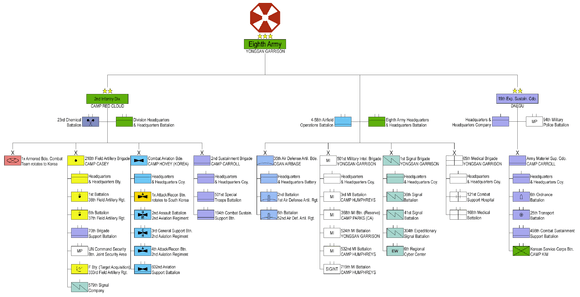
![]()
.svg.png)
- Rotational Armored Brigade Combat Team, Camp Hovey
- 210th Field Artillery Brigade, Camp Casey
- Combat Aviation Brigade, 2nd Infantry Division USAG Humphreys
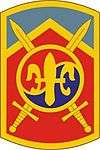

- 94th Military Police Battalion
- US Army Material Support Command – Korea, Camp Carroll
- Headquarters & Headquarters Company
- 6th Ordnance Battalion
- 25th Transportation Battalion (Movement Control)
- 498th Combat Sustainment Support Battalion
- Korean Service Corps Battalion, Camp Kim

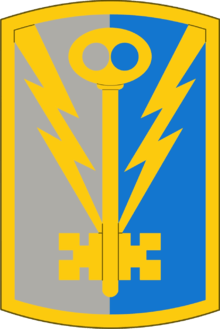
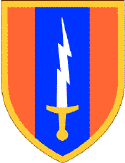
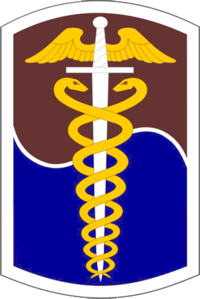
- Headquarters and Headquarters Battalion, Yongsan Garrison
- Headquarters and Headquarters Company
- Headquarters and Headquarters Detachment
- United Nations Command Honor Guard Company
- 4th Battalion (Airfield Operations), 58th Aviation Regiment, Camp Humphreys
- 106th Medical Detachment, Camp Red Cloud, Yongsan, Camp Humphreys, Osan Air Base, and Camp Walker
- Korea Field Office, Yongsan Garrison
Commanders
| Image | Name | Start | End |
|---|---|---|---|
.jpg) |
LTG Robert L. Eichelberger | 1 January 1944 | 4 August 1948 |
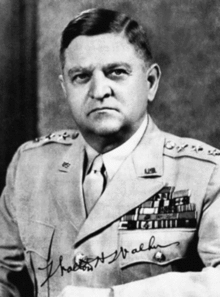 |
LTG Walton Walker | 4 August 1948 | 23 December 1950 |
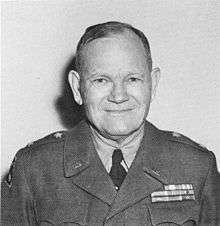 |
LTG Frank W. Milburn (acting commander) |
23 December 1950 | 25 December 1950 |
 |
LTG Matthew Ridgway | 23 December 1950 | 14 April 1951 |
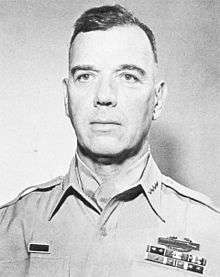 |
GEN James Van Fleet | 14 April 1951 | 11 February 1953 |
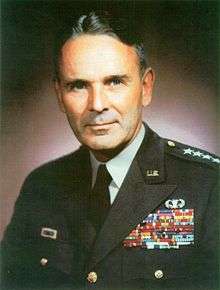 |
GEN Maxwell D. Taylor | 11 February 1953 | March 1955 |
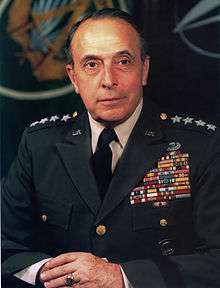 |
GEN Lyman Lemnitzer | March 1955 | 1957 |
 |
GEN Isaac D. White | 1957 | 1959 |
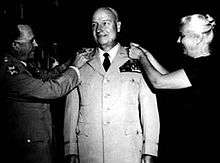 |
GEN Carter B. Magruder | 1961 | 1963 |
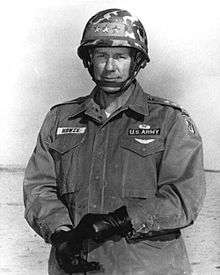 |
GEN Hamilton H. Howze | 1 August 1963 | 15 June 1965 |
 |
GEN Dwight E. Beach | 1965 | 1966 |
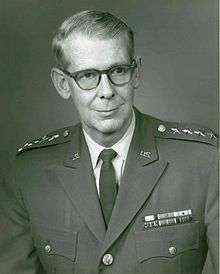 |
GEN Charles H. Bonesteel, III | 1966 | 1969 |
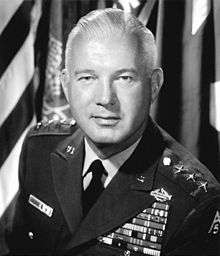 |
GEN John H. Michaelis | 1969 | 1972 |
| GEN John W. Vessey, Jr. | 1976 | 6 November 1978 | |
| GEN John A. Wickham, Jr. | 1979 | 1982 | |
.jpg) |
GEN Robert W. Sennewald | 1982 | 1984 |
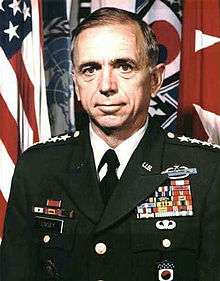 |
GEN William J. Livsey | 1 June 1984 | 25 June 1987 |
| GEN Louis C. Menetrey, Jr. | 25 June 1987 | 26 June 1990 | |
 |
GEN Robert W. RisCassi | 26 June 1990 | 1992 |
 |
GEN Edwin H. Burba, Jr. | 1992 | 1993 |
 |
LTG Charles C. Campbell | 6 December 2002 | 10 April 2006 |
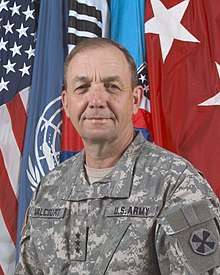 |
LTG David P. Valcourt | 11 April 2006 | 17 February 2008 |
.jpg) |
LTG Joseph F. Fil, Jr. | 18 February 2008 | 19 November 2010 |
 |
LTG John D. Johnson | 9 November 2010 | 26 June 2013 |
 |
LTG Bernard S. Champoux | 27 June 2013 | 2 February 2016 |
 |
LTG Thomas S. Vandal | 2 February 2016 | 5 January 2018 |
 |
LTG Michael A. Bills | 5 January 2018 | Present |
References
- 1 2 "Enter the Dragon: Eighth Army unveils new emblem" (15 April 2013)
- 1 2 Yongsan garrison move pushed back to 2019 Archived 30 June 2013 at the Wayback Machine.
- ↑ This Day in History, 1950, Korean War Begins
- ↑ National Archives, US Enters the Korean Conflict
- ↑ National Archives, US Enters the Korean Conflict
- ↑ History Vault, Korean War
- ↑ National Archives, US Enters the Korean Conflict
- ↑ History Vault Korean War
- ↑ The National Defense Committee visits Eighth Army Headquarters (29 August 2017)
- ↑ Don Oberdorfter, The Two Koreas: A Contemporary History, Addison-Wesley, 1997, p. 86.
- ↑ Oberdorfer, The Two Koreas, 1997, 86-94.
- ↑ "8th U.S. Army Starts Moving Out of Seoul". The Chosun Ilbo. 26 April 2017. Retrieved 27 April 2017.
- ↑ "Eighth Army". 8tharmy.korea.army.mil. Retrieved 2018-01-22.
- Blair, Clay (2003). The Forgotten War: America in Korea, 1950-1953 (illustrated, reprint ed.). Naval Institute Press. ISBN 1591140757. Retrieved 18 April 2014.
- Blair, Clay (12 December 1987). The forgotten war: America in Korea, 1950. Times Books. ISBN 0812916700. Retrieved 18 April 2014.
External links
| Wikimedia Commons has media related to Eighth United States Army. |
- Eighth Army – Official Homepage
- GlobalSecurity: Eighth Army
- The short film STAFF FILM REPORT 66-12A (1966) is available for free download at the Internet Archive